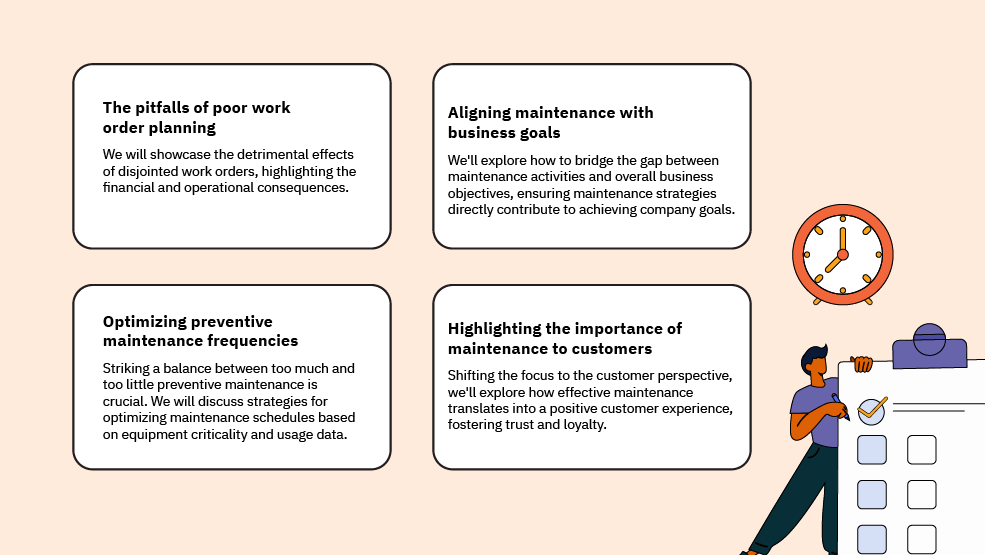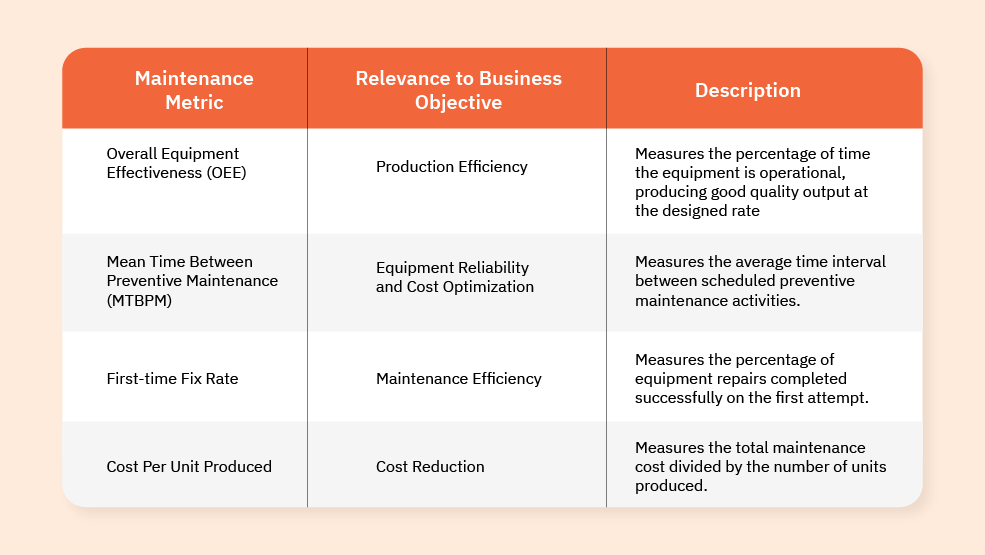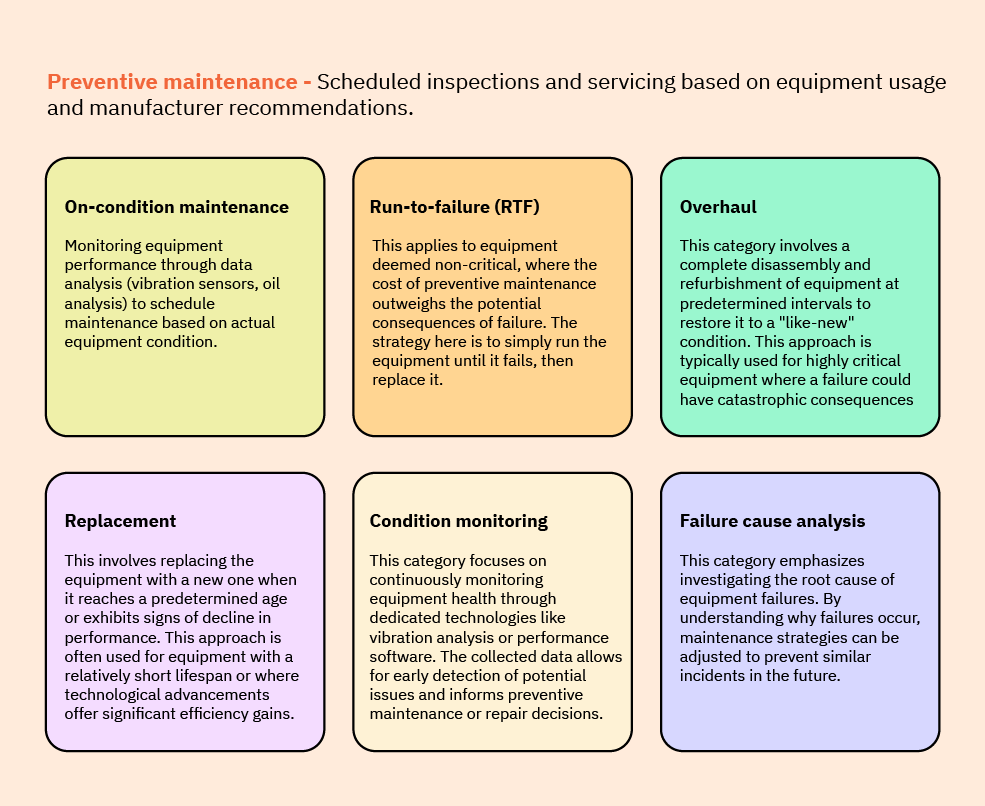Equipment of all forms has become an integral part of our daily lives. We are not only referring to the heavy machinery used at construction sites or in industrial applications but also the simple equipment that we depend on to make our everyday lives easier. When it comes to equipment maintenance, we can borrow the phrase coined by Thomas Fuller, which reads, “A stitch in time saves nine.” This piece of valuable advice holds true even today, and we can see this is put into practice with the emergence of the predictive maintenance industry. The global predictive maintenance market is expected to grow considerably between 2020 and 2030.
While sized at 4.5 billion US dollars in 2020, the market is projected to grow to 64.3 billion US dollars by 2030. It is a clear sign that the industrial landscape is transforming significantly. Automation is rapidly changing how businesses operate, with complex machinery and interconnected systems becoming the norm. These advancements allow maintenance teams to offer increased productivity and improved product quality and introduce new challenges for maintenance teams. In this article, we’ll look at how effective work order management has become the cornerstone of efficient operations in today’s environment.
Work order management, the cornerstone of efficiency in a world of automation and complexity
The industrial landscape is undergoing a significant transformation. Automation is rapidly changing how businesses operate, with complex machinery and interconnected systems becoming the norm. These advancements may offer increased productivity and improved product quality but also introduce new challenges for maintenance teams. This shift in complexity demands a proactive approach to maintenance.
Unplanned downtime caused by unexpected equipment failures can be catastrophic. A recent study revealed that businesses had at least two unplanned outages in a year. These events paint a grim picture across various industries, highlighting the financial burden of reactive maintenance strategies.
In this article, we will explore the world of work order management, focusing on strategies to optimize efficiency, reduce costs, and extend equipment lifespans. Let’s explore the four key areas.

Implementing a well-structured work order management system can provide significant benefits for businesses. Improved efficiency, reduced downtime, and optimized resource allocation are just a few ways a work order management system can benefit your company. This article serves as a guide to navigating the evolving field of work order management, empowering you to unlock the full potential of your maintenance team and equipment.
The consequences of poor work order management and why planning matters
Reactive maintenance, driven by equipment failure rather than proactive planning, relies on emergency repairs. These repairs are often more expensive than preventive maintenance. A recent study by McKinsey & Company found that preventive maintenance costs save 20 to 30% of the equipment’s maintenance cost. Emergency repairs can cost up to 3-5 times that amount. Imagine the financial burden on your business; not only do you have to deal with lost production due to the downtime, but the emergency repairs will cost more than if routine maintenance had been performed beforehand. Regular maintenance allows the discovery of issues on the horizon before they become problems, enabling you to address them early—saving money on much more expensive repairs.
Safety hazards and regulatory fines
While taking care of neglected equipment may be part of inventory management, it also contributes to poor work order management. It poses significant safety risks to employees. Worn-out machinery, faulty electrical systems, and malfunctioning safety features all increase the likelihood of accidents and injuries. Beyond the human cost, safety violations can result in hefty fines from regulatory bodies like OSHA (Occupational Safety and Health Administration). The financial and reputational damage caused by such occurrences underscores the importance of proactive maintenance in ensuring a safe working environment.
The ripple effect on customer satisfaction and brand reputation
The consequences of poorly planned work orders extend beyond internal disruptions. Missed deadlines and production delays translate to late deliveries and frustrated customers. The inability to fulfill orders on time could lead to lost contracts and damage your reputation. In today’s competitive landscape, customer satisfaction is paramount. Unplanned downtime directly hinders a company’s ability to meet customer expectations, eroding trust and potentially leading to customer churn. By prioritizing well-planned work order management, businesses can avoid these risks and reap the benefits of a proactive approach. Now, let’s get into the strategies for aligning maintenance with business goals, optimizing preventive maintenance frequencies, and ensuring efficient operations and a positive customer experience.
Aligning your maintenance strategy with business objectives
In today’s competitive business environment, every department must operate harmoniously with the overall organizational goals; maintenance is no exception. Simply focusing on keeping equipment running is not the only ting that is required. Maintenance strategies must be strategically aligned with the broader business objectives for success. Let’s break down a four-step process to achieve this vital alignment.
1. Confirm the goals of your organization
The first step is clearly understanding your company’s mission, vision, and strategic priorities. What are your team’s key objectives? Is the focus on increased production output to meet growing market demand? Are you prioritizing improved product quality to differentiate yourself from competitors? Perhaps cost reduction is a top priority to remain competitive in a tight economic climate. Understanding these goals is crucial for tailoring your maintenance strategy. By aligning your maintenance activities with the company’s strategic direction, you ensure that maintenance is not just a cost center but a strategic contributor to achieving overall business objectives.
2. Linking maintenance KPIs to business goals
Once you understand the company’s goals, it’s time to translate them into actionable metrics for your maintenance team. This is where Key Performance Indicators (KPIs) come into play. KPIs are quantifiable measurements that track progress toward achieving specific goals. The beauty of maintenance KPIs lies in their ability to bridge the gap between equipment performance and business objectives.
Consider two standard maintenance KPIs
Mean Time Between Failures (MTBF): This metric measures the average time between equipment failures.
Mean Time to Repair (MTTR): This metric measures the average time to repair a failed piece of equipment.
To put this into perspective, let’s say your company’s primary goal is to increase production output. By focusing on improving MTBF, you can directly reduce unplanned equipment downtime. Less downtime translates to more production hours, ultimately contributing to achieving the business objective of increased output.
3. Choosing your maintenance metrics
Not all maintenance metrics are created equal. Selecting the right ones is crucial for tracking progress toward achieving business goals. Here’s where a deeper dive into specific metrics becomes necessary. The table below outlines some standard maintenance metrics and their relevance to different business objectives.

This table provides a glimpse into the diverse maintenance metrics available. The key is choosing metrics that directly align with your company’s business goals. For example, if cost reduction is a top priority, focusing on metrics like cost per unit produced and first fix rate can help identify areas for improvement and optimize maintenance spending.
4. Planning maintenance activities to achieve your targets
Once you have defined your company goals, identified relevant KPIs, and selected the appropriate maintenance metrics, it’s time to translate that information into an actionable maintenance plan. This plan should establish a preventive maintenance schedule based on the chosen metrics. By analyzing historical data on equipment performance and failure rates, you can predict maintenance needs and schedule preventive maintenance activities accordingly. This proactive approach ensures your equipment is optimally maintained, preventing unexpected failures and downtime, ultimately contributing to achieving your business objectives. For example, if your OEE analysis reveals a specific piece of equipment significantly impacts production efficiency. In this case, you can adjust the MTBPM for that equipment, scheduling more frequent preventive maintenance to address potential issues before they cause breakdowns and production delays.
Aligning your maintenance strategy with business goals is a powerful way to optimize operations and ensure your maintenance team is a strategic asset. Following these four steps, you can bridge the gap between equipment performance and overall business objectives, enabling your maintenance team to contribute to the company’s success.
Finding the golden ratio to optimizing preventive maintenance schedules
Preventive maintenance is essential when it comes to work order strategy. It involves regularly scheduled inspections, servicing, and replacements of equipment components before they fail. This approach significantly reduces the risk of unexpected breakdowns and unplanned downtime, ensuring equipment operates reliably and efficiently. However, striking the right balance with preventive maintenance is crucial.
Under-scheduling maintenance can increase equipment wear and tear, resulting in more frequent breakdowns and costly repairs. Imagine a scenario where critical production machinery hasn’t undergone preventive maintenance for an extended period. A crucial component could fail unexpectedly, causing a production line shutdown and significant financial losses.
On the other hand, over-scheduling preventive maintenance can be equally detrimental. Performing unnecessary maintenance tasks consumes valuable technician time and resources and increases overall maintenance costs. Consider a fleet of company vehicles undergoing oil changes more frequently than necessary. This wastes resources and generates unnecessary used oil that requires proper disposal.
Reliability-Centered Maintenance (RCM) offers a framework for optimizing preventive maintenance frequencies. This data-driven approach categorizes equipment based on its criticality, the impact it has on operations if it fails, and operating mode, the frequency of the equipment used.
Below are the RCM categories, each with its own recommended maintenance approach:

RCM empowers businesses to tailor maintenance schedules for each piece of equipment, ensuring critical assets receive appropriate preventive maintenance while avoiding unnecessary costs on less critical ones. Consider a commercial building with a complex HVAC system. RCM analysis might identify specific components like air filters requiring frequent replacement for optimal performance, while other elements might be monitored through vibration sensors, scheduling maintenance only when necessary.
Advancements in predictive maintenance technologies like vibration sensors and oil analysis offer another layer of optimization. These technologies provide real-time data on equipment health, allowing maintenance teams to address potential issues proactively before they escalate into full-blown failures.
The key to optimizing preventive maintenance frequencies lies in continuous monitoring and adaptation. By analyzing historical maintenance data alongside real-time equipment health information, businesses can refine their maintenance schedules to ensure optimal equipment performance at minimal cost. This continuous improvement approach ensures your maintenance strategy remains dynamic and adaptable, maximizing the benefits of preventive maintenance.
Scheduling maintenance during peak seasons and sudden shifts
The world of business is rarely static. For many companies, seasonal fluctuations or unpredictable production demands pose a unique challenge when it comes to scheduling maintenance. Performing critical equipment maintenance during this peak period could lead to production delays and missed deadlines. So, how can businesses navigate these dynamic environments and ensure adequate maintenance without disrupting operations? Let’s take a look at a few below.
Embracing historical data
The first step is leveraging historical data; businesses can identify seasonal peaks and valleys in production output by analyzing past trends. This foresight allows for the proactive scheduling of maintenance activities during slower periods. By examining historical sales data, they can predict the pre-holiday rush and schedule crucial equipment maintenance well in advance, ensuring their production line operates smoothly during the busy season.
Flexibility is key
Another strategy involves implementing flexible work order scheduling systems. These systems allow for adjustments based on real-time production needs. Imagine an unexpected surge in orders for a clothing company. A flexible work order system will enable you to prioritize production tasks and potentially reschedule some non-critical maintenance activities for a later date. This adaptability ensures operational continuity even in the face of unforeseen circumstances.
Building buffers
Finally, incorporating buffer periods into maintenance schedules can be a valuable safeguard. These buffer periods are essentially pockets of time within the maintenance schedule that can be used to address unexpected equipment issues or production changes. Think of them as a safety net that allows maintenance teams to adapt to unforeseen circumstances without derailing the entire maintenance plan. By strategically incorporating buffers, businesses can ensure they have the flexibility to respond to dynamic production demands while still completing critical maintenance tasks.
The value of effective maintenance builds trust and loyalty
From a customer’s standpoint, reliable equipment translates to a smooth and positive experience. Effective maintenance ensures minimal downtime and disruptions, allowing them to operate efficiently and meet their deadlines. Beyond operational continuity, well-maintained equipment also improves product quality and consistency. This translates to fewer defects and higher customer satisfaction. Furthermore, proactive maintenance minimizes the risk of accidents caused by equipment failure, promoting a safe working environment for your customer’s employees. Ultimately, effective maintenance translates to long-term cost savings for your customers as they avoid the need for frequent repairs and replacements. Numerous industry case studies showcase effective maintenance’s power in fostering customer trust and loyalty. This exemplifies the positive impact that prioritizing maintenance has on building strong customer relationships.
The future of work order management, embracing innovation and continuous improvement
The future of work order management is brimming with exciting possibilities. Cloud-based CMMS (Computerized Maintenance Management Systems) are revolutionizing data accessibility and fostering collaboration between maintenance teams. Artificial intelligence is poised to transform maintenance further, enabling predictive maintenance and automated work order scheduling. Integration with IoT sensors will provide real-time equipment health insights, allowing for even more proactive maintenance strategies. We encourage you to explore these emerging technologies and continuously refine your work order planning and scheduling practices.
Download our free eBook, “The Future Of Service Management Predictions And Trends,” for a deeper dive into these advancements and practical strategies to elevate your maintenance operations.
By embracing innovation and continuous improvement, you can ensure your work order management system remains a powerful asset in today’s dynamic business landscape.
Ready to streamline your maintenance operations? Explore our comprehensive resource library for downloadable guides, industry best practices, and interactive tools here. Sign up for a personalized demo to understand how Zuper works. We at Zuper try to give you all the resources you need to make the right decision to grow and scale your business. Remember, we at Zuper always provide field service your way!




